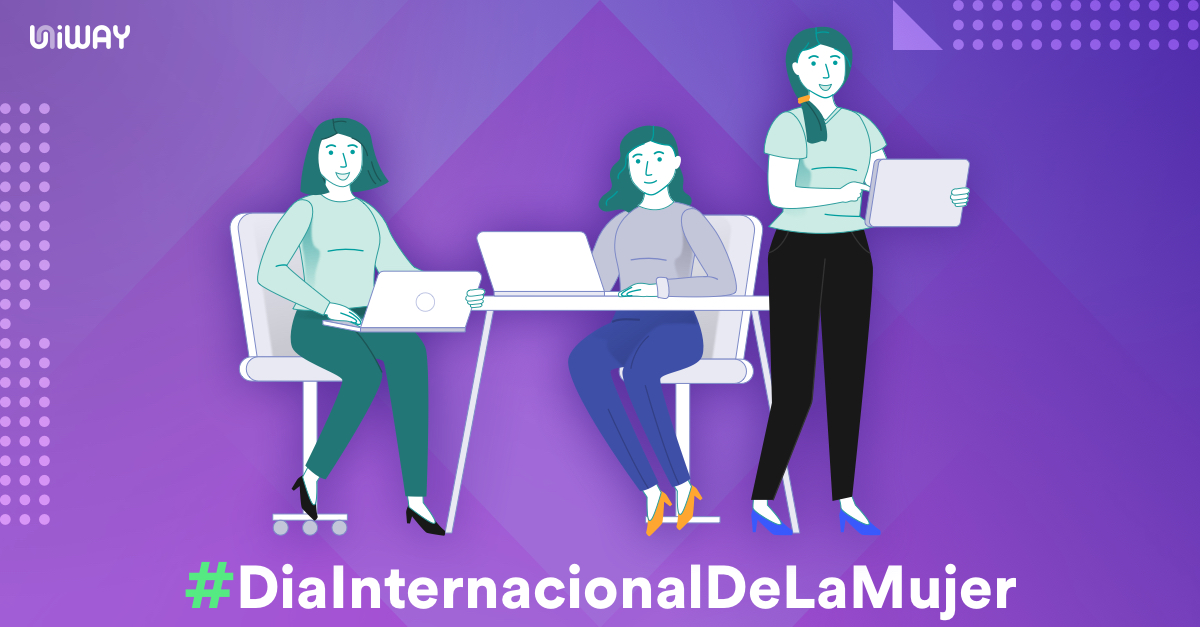The prejudices we face today lead us to identify technology and STEM carreers with men, but if we actually take a brief look at history, we'll find that the relevance of the role women played is more than noticeable in this field. According to a study from the National Observatory of Telecommunications and Information Society (ONTSI), only a 23% of the people that work in the IT sector are women. A percentage that, even if it has increased during the last few years, it is still undoubtedly low, and in a sector such as this one, where there's still lots to discover, the higher the interest on this domain by everyone, the better.
Let's dive in here into the history of some of the most important women in the history of IT. Names such as Ada Lovelace, Grace Gooper, Radia Perlman, Frances E. Allen, Hedy Lamarr... they are just some of the participants and creators of what we know today.
Would you like to get to know them? Let's go!
Let's check out the history...
As in everything else, there are some names more famous than others. Ada Lovelace (1815-1852) was no doubt a pioneer on its own since it was the first half of the 19th century when this woman, the countess of Lovelace, started establishing the basis for programming. With such an unprecedented passion for numbers and based on the ideas of her mentor, Charles Babbage, who had developped a mechanic analytic machine, she described a general programming language where she exposed certain concepts such as the loop or the subroutine and defined the use of punch cards for programming the machine.
In Spain, there are also women who have played an important role in the history of technology. Ángela Ruiz Robles (1895-1975) was a teacher and an educator that in 1949 invented what she defined as “Mechanical and electrical procedure based on air pressure for book reading”. This is no more and no less than what could be called the precedent of e-books.
In another part of the world, Mary Kenneth Keller (1913-1985) would come to the fore, a religious catholic that became the first woman to get her doctorate in IT in the United States. Among her achievements, it should be highlighted its participation in the development of the first programming language that took programming to the general public as it was BASIC (Beginner’s All-purpose Symbolic Instruction Code).
The following protagonists are maybe more popular, since in 2010 a documentary made their history known to the general public. We're talking about Top Secret Rosies; six women selected by the american army and whose task was that of programming the computer ENIAC (Electronic Numerical Integrator And Computer). Their names were: Betty Snyder Holberton, Jean Jennings Bartik, Kathleen McNulty Mauchly Antonelli, Marlyn Wescoff Meltzer, Ruth Lichterman Teitelbaum and Frances Bilas Spence.
According to a study of the National Observatory of Telecomunications and Information Society (ONTSI), only 23% of the people who work in the IT sector are women.
Does programming language Cobol ring a bell? It was created in 1959 with the aim of creating a universal programming language that may be used in any computer. The pioneer was no other than Grace Hooper (1906-1992), maybe one of the women whose name has been one of the most highlighted in technology history. The path of Hopper was fraught with prizes of course, as well as recognitions, that include more than 40 doctorates honoris causa, the Yale Wilbur Lucius Cross Medal, the rank of Captain in 1973, that of Commodore in 1983 and that of Rear Admiral in 1985. Particularly, in IT terms, in 1969, she received the title of "Man of the year" in computer science, in 73 she was the first woman appointed as distinguished member of the British Computer Society and in 1991 she received the National Technology Medal.
In 1914, in Austria, Hedwig Eva María Kiesler (1914-2000) was born, mostly known as Hedy Lamarr, and actress that would emerge in Hollywood but whose talent and curiosity took het farther than the center of cinema. Lamarr was the inventor of the communication's system, “technic of transmission in the spread spectrum” on which all wifi technologies we currently have are based, the wifi we need so much nowadays, but at the time it was conceived for the USA army to use it to create torpedos that germans wouldn't be able to stop.
Paralell task automation and compilator optimization also counts on women's presence. Frances Elizabeth Allen (1932-2020). The following protagonist is maybe more popular since in 2010, a documentary made her story known to the general public. Here we talk about Top Secret Rosies; six women selected by the american army and whose task was that of programming the computer ENIAC (Electronic Numerical Integrator And Computer). Their names were: Betty Snyder Holberton, Jean Jennings Bartik, Kathleen McNulty Mauchly Antonelli, Marlyn Wescoff Meltzer, Ruth Lichterman Teitelbaum and Frances Bilas Spence.
Do you know today someone who could live without the Internet? Well, actually, you can live without it, but we cannot deny that this tool has turned into something essential. If you can navigate the network today, it is partly thanks to Radia Perlman (1951). She was a network engineering, software creation and security expert. She discovered the algorithm of the spanning tree (STP, Spanning Tree Protocol), which was the final push for the Ethernet network to go from connecting a couple hundred computers to becoming a much more wide and extended fabric, making the way for the Internet we know today.




